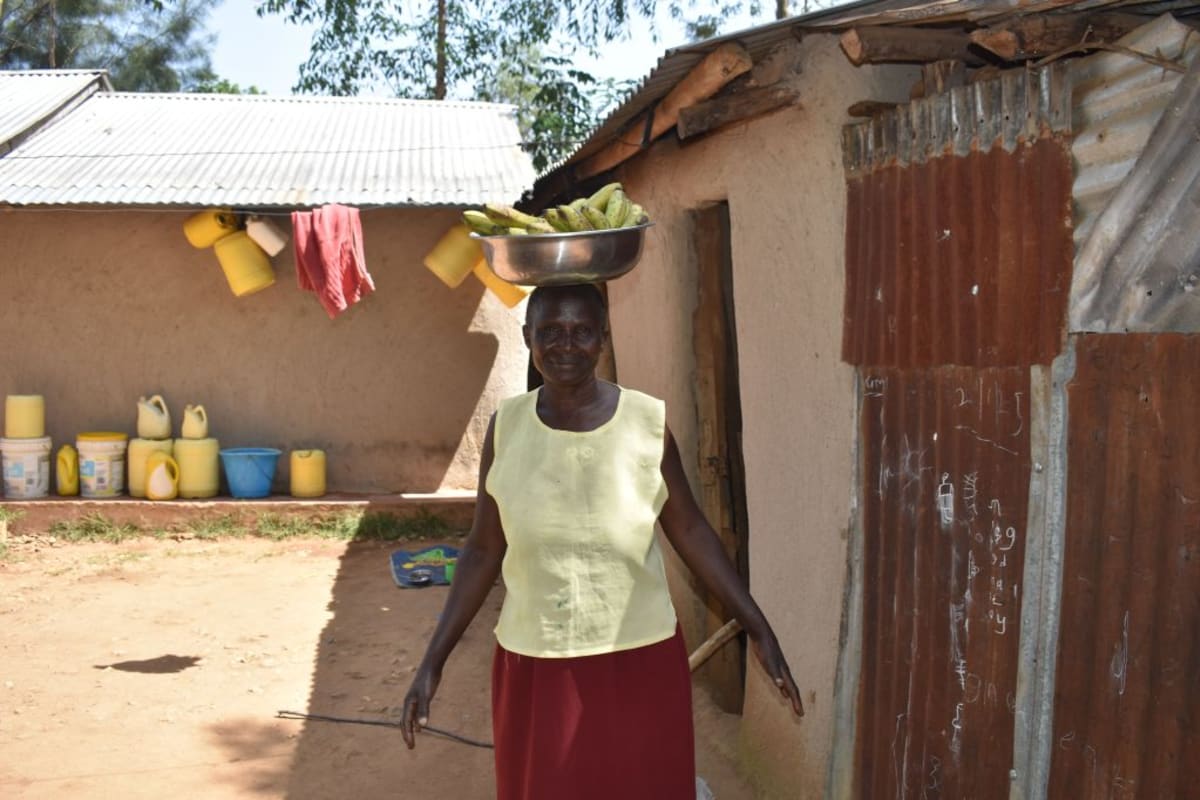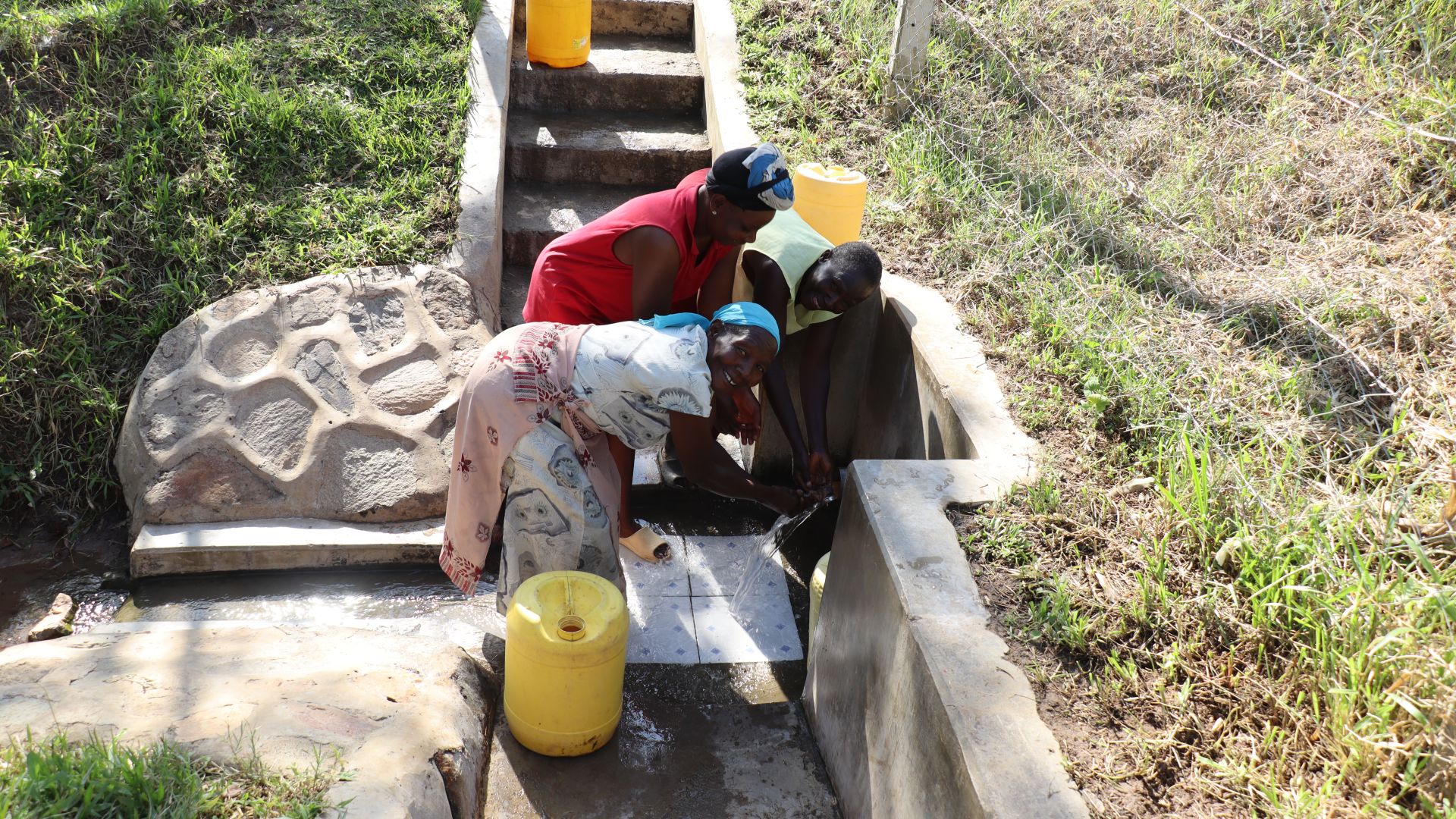Keya Spring is the primary water source for the 245 people living in Khwiyondwe to meet their daily water needs. But sadly, although the spring supplies sufficient water, it is unsafe to consume.
"The community is fetching water that is not protected, [and] this is affecting them," said our field officer Protus Ekesa.
The spring is wide open to contamination. People walk in the water, do their laundry and go to the bathroom near the spring, and deposit debris from chewing sugarcane. As a result, the water quality is suffering.

To access the spring, people must climb down rocky, rough terrain into a crater filled with dirty water up to their ankles. Then they place their collection containers in the pool of water under the large, broken water pipe that is sticking out of the muddy bank. After their containers are full, they climb back out of the area, hauling the heavy containers. This is difficult to do on a normal day, but especially so during the rainy season when the path becomes slippery with mud.
"It's very difficult to access [the] water, especially after it has rained. This makes it very dangerous leaving the spring after getting water," said Protus.
"I feel tired after going to the spring two times because getting out [of the collection area] with [the] container on the head is very difficult and risky," said 40-year-old Mercy Kamwana, shown below carrying water from the spring on her head.

A full 20-liter container of water weighs about 44 pounds. Many people report suffering from spinal, head, neck, or back pain as a result of the continual task.
And all of this effort only gives them water that is likely going to make them sick. People dread the task and the waste of their time that they would rather use for other things.
"I miss sometimes to go for practice in the field because [I] am looking for water," said 19-year-old Brian.

By protecting the spring, community members will be granted safe access, so they can quickly collect water for all of their needs. And they will also have the added benefit of knowing the water is safer for them to consume.
"The proposed project, which is [a] protected spring, will help them get clean and safe water throughout," concluded Protus.
The Proposed Solution, Determined Together...
At The Water Project, everyone has a part in conversations and solutions. We operate in transparency, believing it benefits everyone. We expect reliability from one another as well as our water solutions. Everyone involved makes this possible through hard work and dedication.
In a joint discovery process, community members determine their most advantageous water solution alongside our technical experts. Read more specifics about this solution on the What We're Building tab of this project page. Then, community members lend their support by collecting needed construction materials (sometimes for months ahead of time!), providing labor alongside our artisans, sheltering and feeding the builders, and supplying additional resources.
Water Access for Everyone
This water project is one piece in a large puzzle. In Kenya, Sierra Leone, and Uganda, we're working toward complete coverage of reliable, maintained water sources that guarantee public access now and in the future within a 30-minute round trip for each community, household, school, and health center. One day, we hope to report that this has been achieved!
Training on Health, Hygiene & More
With the community's input, we've identified topics where training will increase positive health outcomes at personal, household, and community levels. We'll coordinate with them to find the best training date. Some examples of what we train communities on are:
- Improved hygiene, health, and sanitation habits
- Safe water handling, storage & treatment
- Disease prevention and proper handwashing
- Income-generation
- Community leadership, governance, & election of a water committee
- Operation and maintenance of the water point
Chlorine Dispensers
Installing chlorine dispensers is an important piece of our spring protection projects. Protecting a spring provides community members with an improved water source, but it doesn’t prevent contamination once the water is collected and stored. For example, if the water is clean and the container is dirty, the water will become contaminated.
We ensure that each chlorine dispenser is filled with diluted chlorine on a consistent schedule so that people can add pre-measured drops to each container of water they collect. That way, community members can feel even more confident in the quality of their water.




 Protected Spring
Protected Spring
 Rehabilitation Project
Rehabilitation Project































